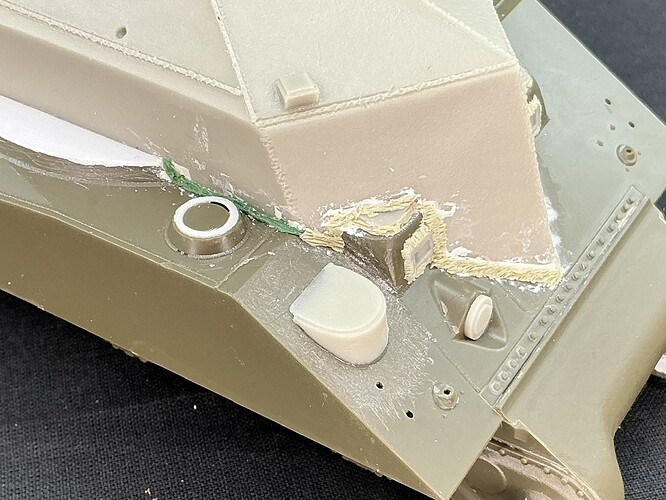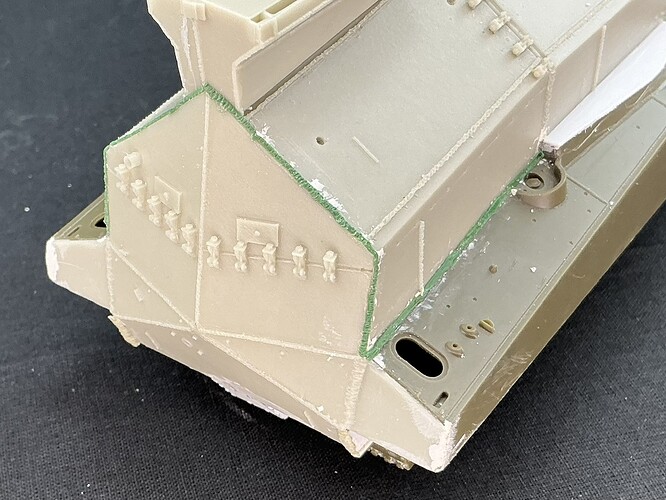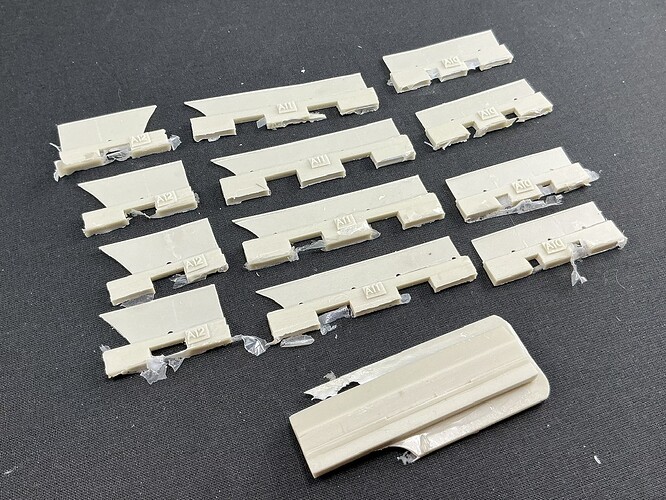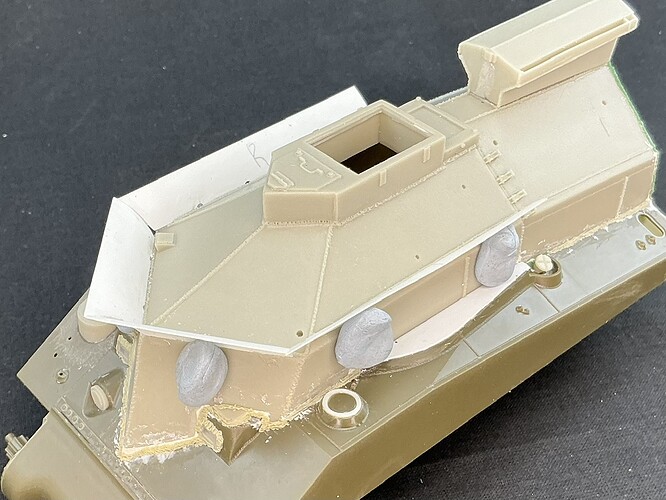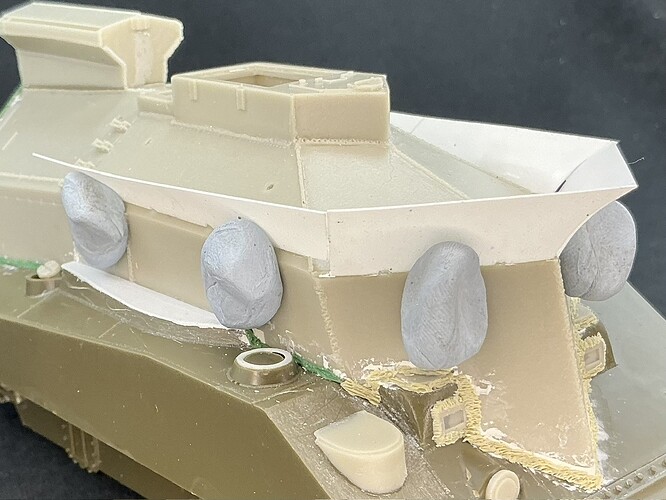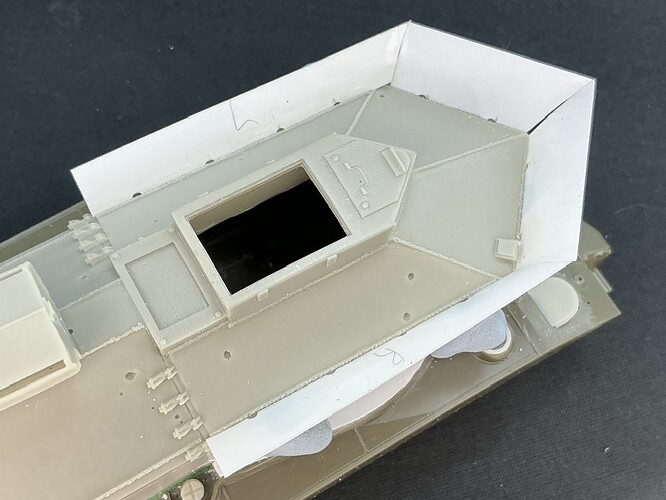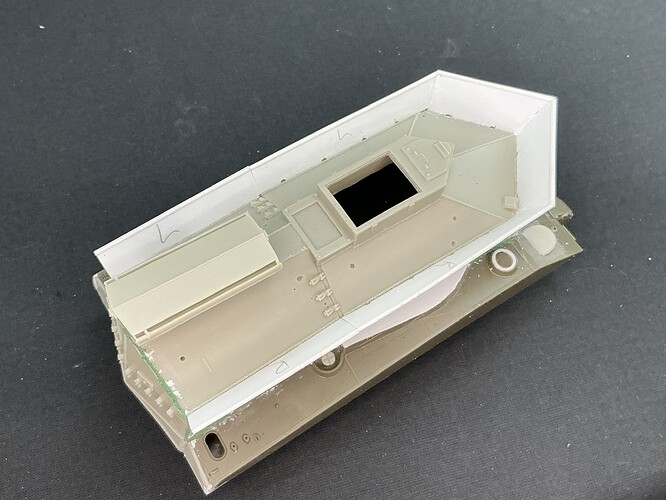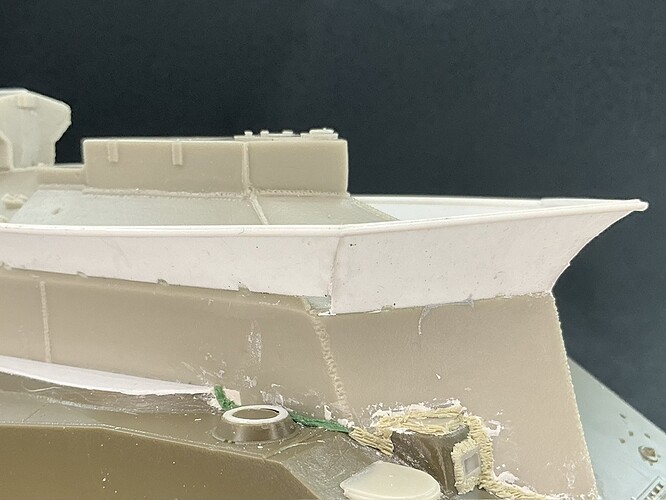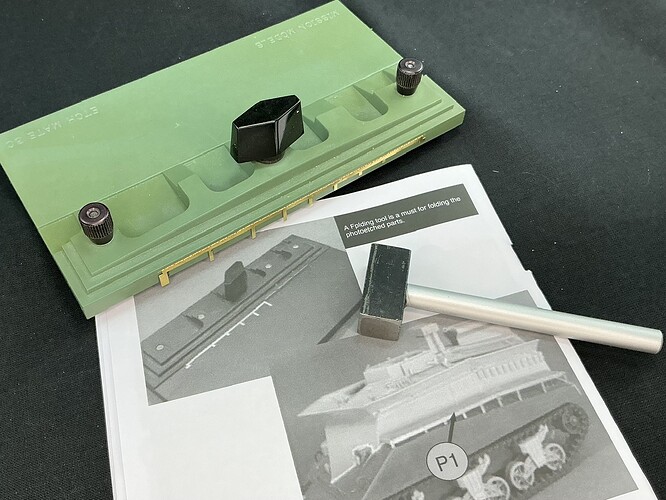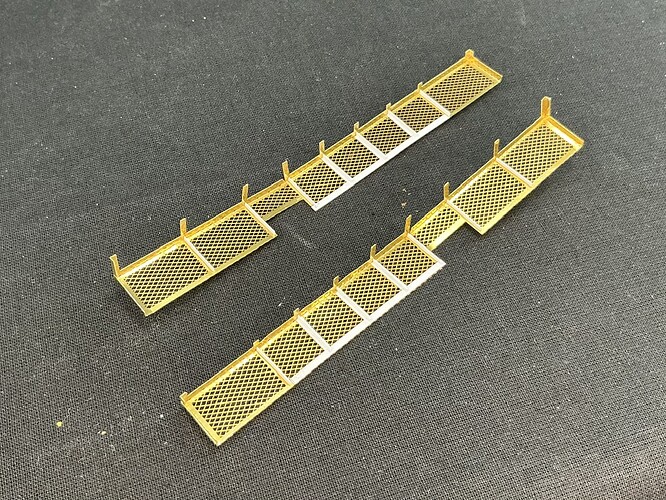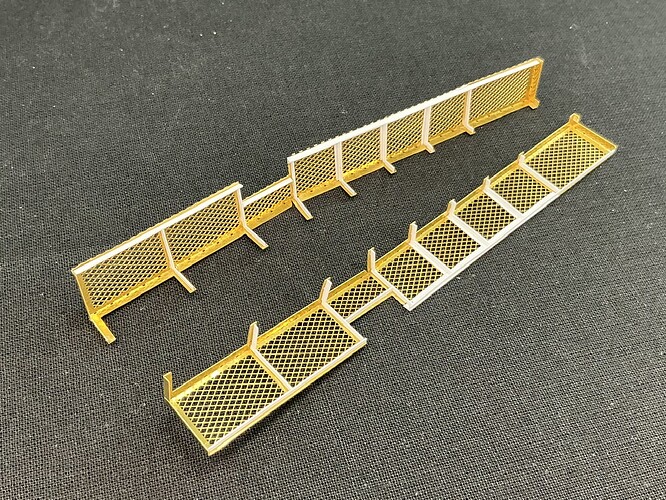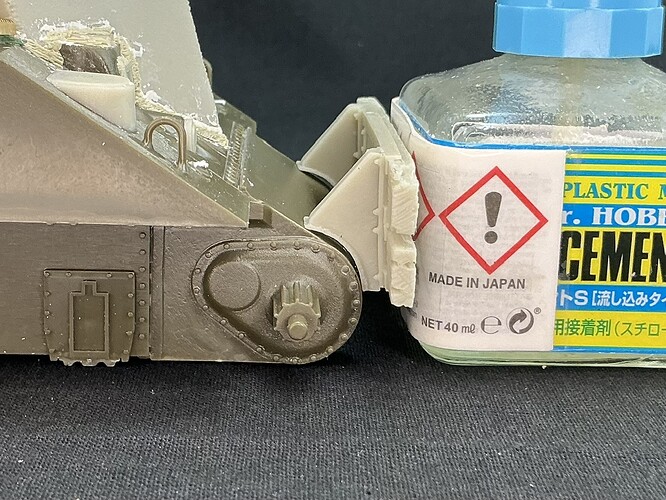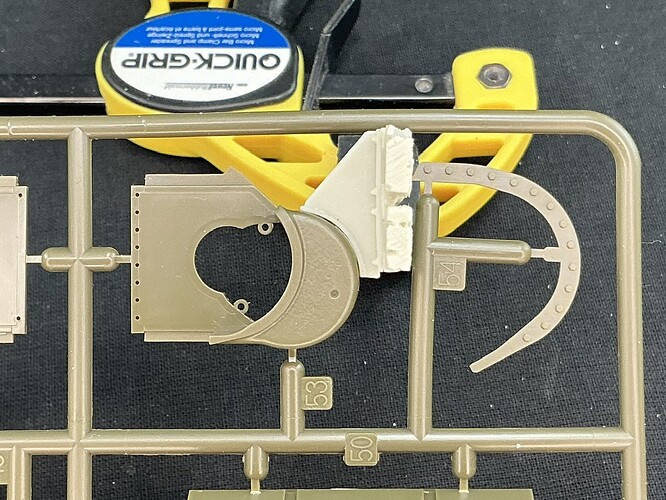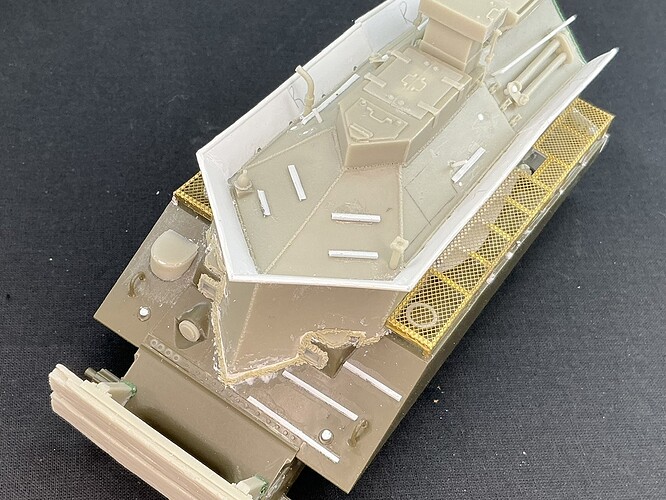Now the heat in my hobby room is mostly gone again, on to the catwalk!
The instructions say to use a bending tool, and luckily, I have one of those. However, trying it the way the instructions show didn’t exactly work for me … The idea is to put the main part of the catwalk into the tool, leaving the legs sticking out so you can bend them upward. That mostly bent only the legs and not the horizontal bar above them, so I quickly flattened it all out again and tried again on the other side of the bending tool:
That way, I could push it down with the side of the head of a small hammer (from an RP Toolz punch & die set) and get it mostly square. It needed a bit more work to make it, and then bending the legs at the corners, before I could fit them to the hull.
Or so I thought … Trying that showed up an oddity: there are supports “under” the mesh that don’t go all the way to the inner edge, but they do overlap the turret splash guard, so they look like they should sit on top of that. But if you do that, things don’t fit because the catwalk ends up angled inward. What is going on here?
The short form of it is: Resicast made a mistake. On the real vehicle, those supports do go all the way to the inner edge, and there is a longitudinal one there too, not just at the front and rear like the kit parts have them. What’s more, those supports are L- and T-profiles: L along the outer edges, T everywhere else. Out with the plastic strip:
1.5 × 0.25 mm strip to complete the bits under the mesh, and 1 × 0.25 mm for the vertical bits. This is not even half of what needs to be added, but I’m letting the glue on this dry first.
Oh, and I added stuff to the upper part, too:
The kit provides the hand rails, but they seem to have shrunk in casting, so they didn’t fit their locating holes. I drilled those out and made the rails from 1 mm plastic rod.


